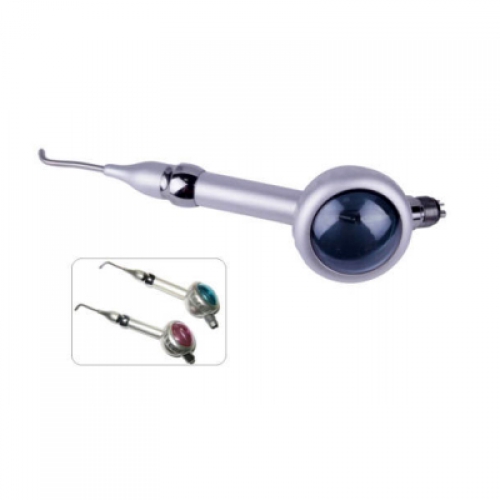Dental air polisher was developed in the early 1970’s as a technique for fast and efficient removal of extrinsic stains, plaque and other soft deposits from the teeth. It comprises a stream of pressurized air carrying specially graded particles of a mild soluble abrasive usually sodium bicarbonate, mixed with a stream of water.
Dental root form implants are manufactured from a highgrade titanium alloy, the surface of which consists of a micro layer of titanium oxide. The implant surface can also be treated by plasma spraying, acid etching, sandblasting or coated with HA. The removal of plaque and calculus deposits from these implant surfaces with Dental Instruments designed originally for cleaning natural tooth surfaces can result in major alterations to the delicate titanium oxide layer. Altering the surface topography by roughening the surface may enhance calculus and bacterial plaque accumulation.

Resulting scratches, cuts or gouges may also reduce the corrosion resistancy of titanium, and corrosion and mechanical debris can accumulate in the surrounding tissue. The aim of procedures for debriding dental implants should be to remove microbial and other soft deposits, without altering the implant surface, and thereby adversely affect biocompatibility. Increased surface roughness can lead to an increase in bacterial accumulation and resultant soft tissue inflammation. Because of the critical nature of the implant/soft tissue relationship, metal ultrasonic scaler tips, hand scalers or curettes should not be used as they have been shown to significantly alter the titanium surface.
If inflammation becomes established in the periimplant tissues, pocketing and bone loss can develop, which if left untreated, will result in the loss of the implant. Clinicians worldwide are advocating surgical regenerative procedures to restore or repair lost periimplant tissues.These techniques attempt to achieve the repair or regeneration of lost periimplant tissues,and rely on making the implant surface biocompatible with the healing tissues. This implies a detoxification of the previously infected implant surface.
Airpolishing with the H.S.T polishing system is an efficient and gentle means of debriding the implant surface to aid the removal of bacteria and bacterial toxins. The unique H.S.T. polishing system has been shown to result in no damage to the surface of titanium implants or transmucosol elements. An initial report has indicated that the HA coating can be removed with the H.S.T. polishing system.Removal of HA is sometimes indicated when the HA coating has been seriously compromised by the inflammatory process.

